- Home
- / Blog
- / Interior Design
Lighting for Exhibitions
01/18/2022
An art exhibition is an entire experience, and exhibition lighting plays an important role at the center of it all. The correct lighting is fundamental, allowing you to perceive the whole composition, accentuate its features, and draw all the focus to the artwork the moment you enter the room.
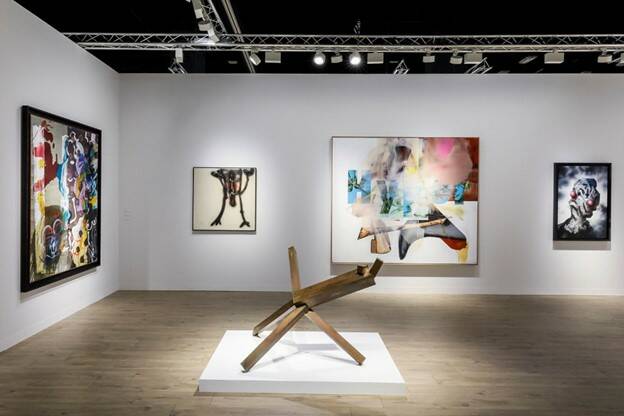
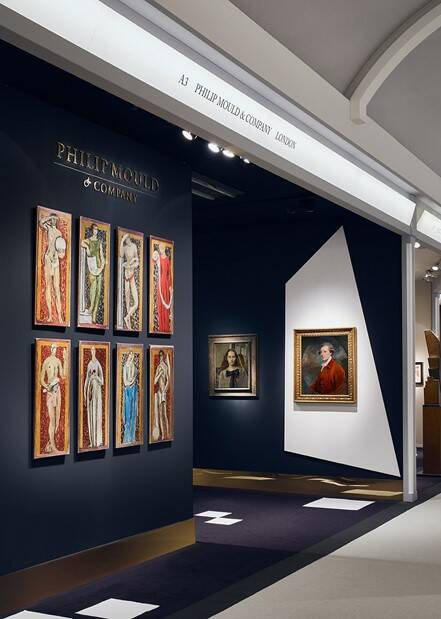
Art is delicate, and as such, much care is taken in the selection of the right light fixtures to illuminate it. Light is one of the most important factors in a painting’s conservation. While it enhances the boldness of colors in the artwork, it can equally damage both pigments and bindings. Selecting the wrong lighting could mean heat and light damage to the artwork, fading colors, or even cracks on paintings. In this sense, what really matters is to preserve the colors, contrasts, and light effects that allow us to appreciate all aspects related to form, values, and materials that have been used by the artist.
What Makes a Good Exhibition Lighting?
How can you select the right display lighting for your art? There are a number of factors that are crucial considerations when illuminating art. Light sources, their specifications, strength, and directionality are chosen depending on their appropriateness for each work of art. Below are the main aspects you need to take into account when selecting the best lighting solution for your artwork.
Conservation of the Artwork
From 2-dimensional art to 3-dimensional pieces, drawings, paintings, sculptures, and photographic art, every art medium is illuminated differently. Acrylic paintings, oil paintings, watercolors, inked drawings, graphite pencil drawings, and pastels all have different sensitivities when it comes to light. Additionally, the fabrics onto which the artwork is made all react differently to long exposures of light. Therefore, it is important to find a balance between conservation and display needs.
The Appropriate Lamp Type
Generally, all art should be kept away from direct sunlight due to the impact of UV light and infrared lighting on the discoloration of paintings. Similarly, all artificial light sources with UV or heat emissions should be avoided or kept at a distance from the artwork.
Art lights exist in LED, incandescent lighting, halogen lamp, and fluorescent light sources. Weighing the pros and cons of each of these light sources, it is important to go for a light fixture that will best conserve your art piece and is equally energy efficient. Incandescent bulbs generate a warm cozy glow but have low energy efficiency. Halogen bulbs generate a considerable amount of heat. Hence, you should only use halogen lights when there is a safe distance between the lamp and the artwork. Fluorescents emit UV light which makes them less popular in art lighting.
On the other hand, LED lamp types are the most efficient, generating the least amount of heat and UV radiation. LED Light comes in a wide range of color temperatures, allowing you to switch from a warm glow to neutral lighting and cool lighting with ease. Regardless of the type of lighting you go for, a high Color Rendering Index of over 90 is a key specification for exhibition lighting. This will not only allow viewers to appreciate the artwork’s true colors, but will enhance every detail and improve contrast, making the colors appear more vibrant.
Light Level
When highlighting art with accent lighting, the light output of your art light fixture should be at least three times the light level in the room. This creates a 3 to 1 contrast ratio that will make your artwork pop from the background, prominently capturing all the attention to itself.

The standard used by lighting designers for art exhibitions generally ranges between 50 lux to 150 lux. However, for light-sensitive art pieces, you have to consider the light intensity and the exhibition period of the artwork. You will need to use lower lighting levels of up to 50 lux for watercolor mediums, prints, and photographs. Black and white prints, artworks, and manuscripts are less sensitive to light and can withstand up to 150 lux of light output.
Exposure of artworks on organic surfaces such as textiles, leather, paper, and wood should always be limited by reducing the length of the exhibition period and regulating the display lighting to a maximum of 50 lux. Multiplying the light output by the hours of exposure will give you the lux-hours against which you can measure the recommended exposure limit of your piece. If you need to increase the light levels, then you have to reduce the exhibition duration. The recommended annual exposure for light-sensitive artwork is 100,000 lux hours and 450,000 lux hours for artworks with comparatively lower sensitivity.
Sculptures and collections made of ceramics, glass, stone, or metal are the least sensitive and can be continuously displayed under 300 lux lighting.
The Art Frame
The type of art frame will determine the design of the light fixture you select. For instance, frame-mounted picture lights would require a sturdy picture frame. Frameless paintings and artworks with thin frames require wall-mounted and ceiling-mounted fixtures.
The Best Display Lighting Fixtures for your Art
Knowing the qualities and the top considerations you need to make when choosing the perfect exhibition lights for your art, you can proceed to select a light fixture that works for you. You can opt for different beam angles; a spotlight for a focused narrow beam with no light spillage, or a floodlight for wider uniform lighting.

Additionally, you can go for framing head projectors to precisely frame the light to the shape of your artwork or gobos to project patterns and images onto surfaces. There are small, unobtrusive fixtures for low ceiling heights and large fixtures that can only work with high-ceiling heights. Dimming and light adjustment capabilities are also essential for exhibition lighting, allowing you to adjust the lighting levels according to the artwork on display.
There is a wide range of light fixture designs, sizes, and finish options from which to select. Here are the three most popularly used display lighting fixtures in the art industry:
1. Track Lighting
Track lighting is versatile and flexible, making them a preferred lighting design solution for the illumination of artwork, particularly in temporary exhibitions. Since it has an adjustable track head that can easily be repositioned along the track, it allows you to effortlessly change the placement of your art piece on the exhibition stand. Since tracks allow for the fixing of multiple luminaires, track lights are commonly used in art museums to light art collections and larger paintings.
With adjustable beam angles, you can install track lights for your artwork, both large and small. It allows you to shift between floodlighting and spotlighting, framing your light within the artwork for a self-radiating effect. You can also go for wall washers which will illuminate your entire gallery wall.
2. Picture Lights
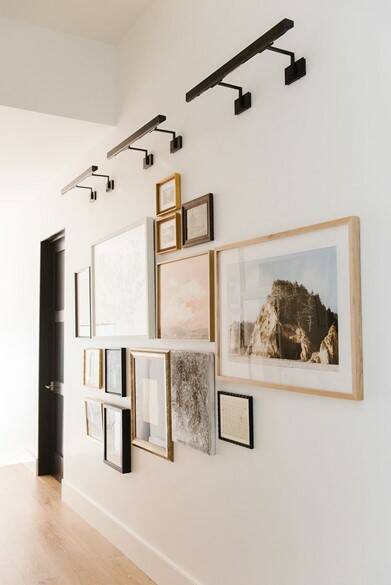
Modern Lake House Gallery Wall, Natalie Yerger, via Pinterest.
Picture lights are intimate luminaires that provide art lighting to individual art pieces. They hang over the painting and are fixed on the frame or mounted on the wall, making them perfect for highlighting a painting on an exhibition stand. Picture lights come in a variety of painted and metallic finishes that will complement any artwork. You can easily spot them in art museums and gallery walls illuminating classical and modern art pieces.
3. Recessed Lighting
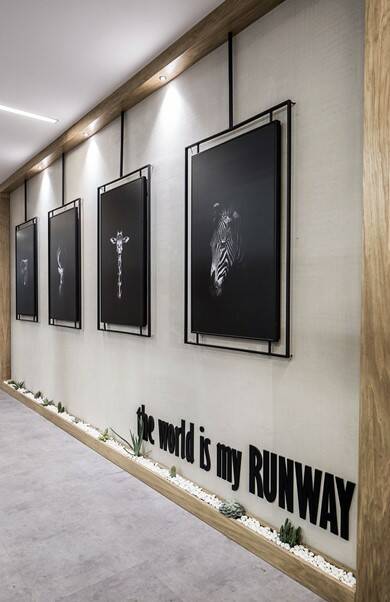
Recessed lighting is most often ceiling-mounted, making it a fixed part of the exhibition stand design. Despite their lack of flexibility, they produce quality light output and are easy to conceal. You can install recessed lights like wall washers to illuminate an entire wall or opt for a smaller beam angle to illuminate a single painting. They are positioned in the ceiling above the artwork, downlighting your paintings and art pieces.
How to Illuminate Different Types of Artworks
Different techniques are required to illuminate different artworks. The following are tips for lighting various types of art mediums.
· Art Lighting for Oil Paintings

Often textured, oil paintings are prone to cracking if continuously exposed to heat. Therefore, a light source with minimum heat emission, placed at a considerable distance is recommended. Additionally, due to the texture of the impasto technique, it is easy for light to cast shadows on the textures of the painting if poorly lit. Go for a broader, diffused light source that will provide soft uniform lighting, thus softening the shadows. Since oil paintings are glossy, watch out for glare when illuminating them. Aim your art light at a 30-degree angle of incidence to minimize glare during viewing.
· Art Lighting for Watercolor Paintings
Watercolor paintings are often matte but are protected under glass for protection. When illuminating any artworks protected under reflective glass, go for lights with adjustable heads and beam angles, aiming the light at 30 degrees to avoid glare. Since they are also highly sensitive to light, ensure your light fixture has an output of less than 50 lux.
· Art Lighting for Paper Prints
Paper-printed artworks are highly light-sensitive and delicate. They are therefore often protected under a glass casing or a glass-front picture frame and illuminated at a maximum light intensity of 50 lux. For artwork printed on glossier paper rather than a matte finish, you will need to address the issue of glare. A diffuser screen will be necessary to avoid glare.
· Lighting for Sculptures
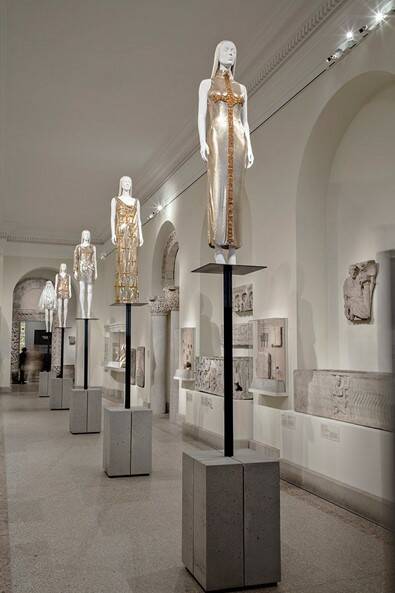
Sculptures are three-dimensional art, and hence require proper lighting from more than one angle to accentuate every detail. Place three light sources at angles that will allow the viewer to fully appreciate the artwork from any standpoint. Diffused lighting is also key in illuminating sculptures to smoothen the shadows cast by the art piece.
However, to bring out texture or if shadows are a necessary part of the display, consider reducing the angle of incidence to emphasize the shadows. Avoid backlighting sculptures since it can wash out the intricate details of the piece, and make it harder to directly view the art. Also, position your lighting in such a way that the shadow of the viewer will not be cast onto the sculpture.
· Light Displays

Light Displays have drawn a more contemporary crowd and admiration for their clever use of lighting. From drone displays to projection mapping and Christmas lights displays in every prominent city in the world, light has become a complex art medium in itself. LED screen walls and immersive light installations have revolutionized how we perceive light and art in the modern world.

Optical illusions created by holiday lights, and laser light displays in every exhibition stand bring in an artistic element of aesthetic appeal. In fact, there are several art museums with exhibition space dedicated primarily to light installations. These include the Johnson Museum of Art in New York, which makes exceptional use of LED lighting, the Guggenheim Museum in New York, which combines LED lighting with daylight in the museum lighting, and the Museum of Modern Art in Louisiana.
Ensuring Your Art Withstands The Test of Time

The role of display lighting in enhancing the experience of art exhibitions is undeniable. However, the quality and type of lighting you use in your art exhibitions can have a great impact on the longevity and preservation of your artworks. Minimizing direct visible light, UV, and Infrared radiations will ensure that your art stands the test of time.
You can borrow from the techniques used in some of the top art exhibitions in the world to learn how to illuminate different art mediums. Having understood the best lights for exhibitions, you can source light fixtures from Perfect Picture Lights for quality LED lighting, picture lights, and track lights that are designed with your artwork in mind. The lighting solutions provide not only professional illumination of your exhibited art but also the conservation of your valuable pieces. Select the best light sources, control the lighting levels, keep exposures to a minimum and use the appropriate UV filters where necessary.
Excerpt
Author’s Profile
Winny Okoth is a practicing Construction Project Manager and Interior Designer. She is currently pursuing her Master’s Degree in Construction Project Management. Winny Okoth has a great passion for every form of design and specializes in 3D visualizations for architectural and interior design.


